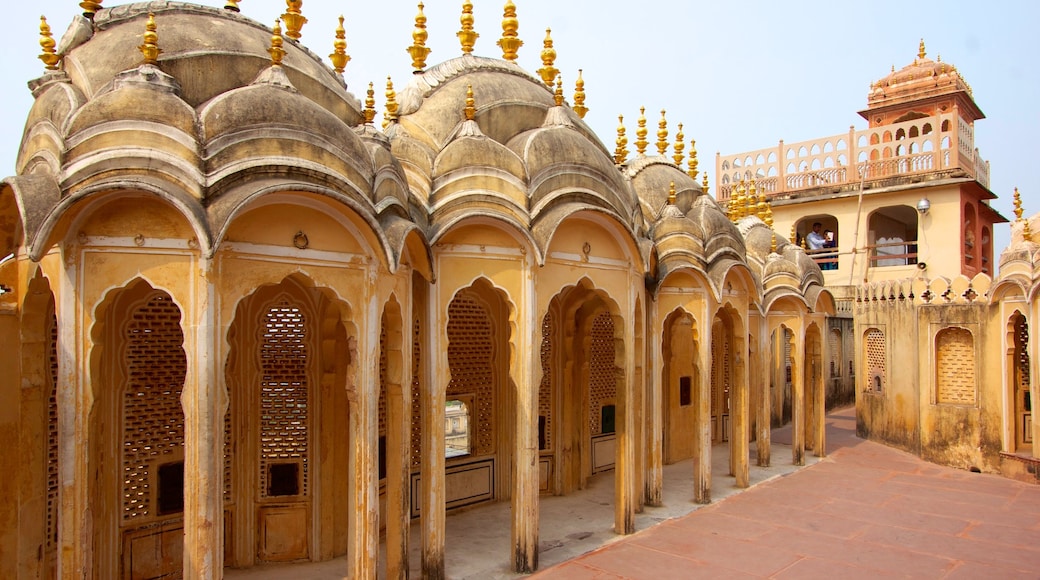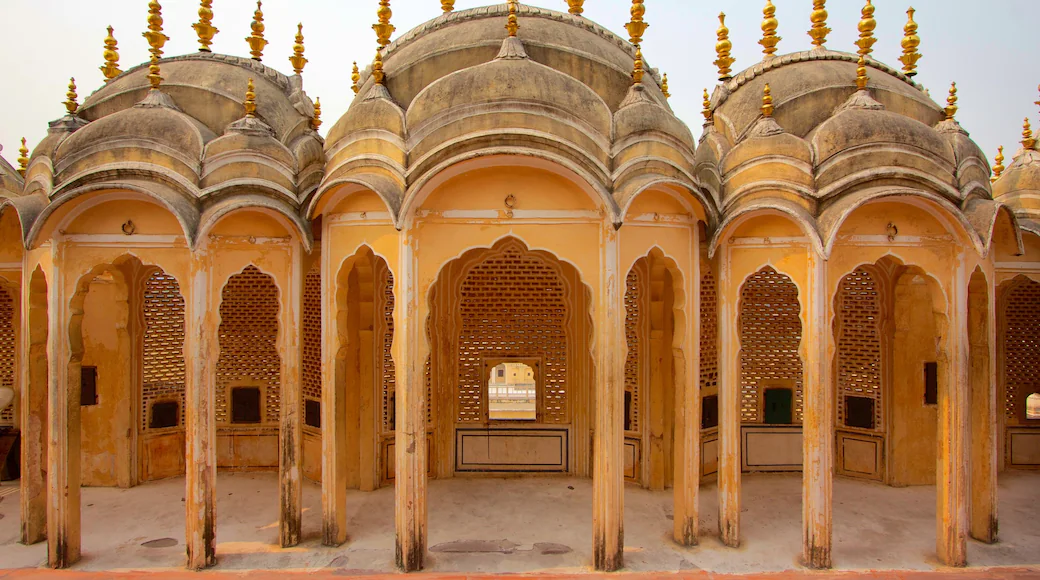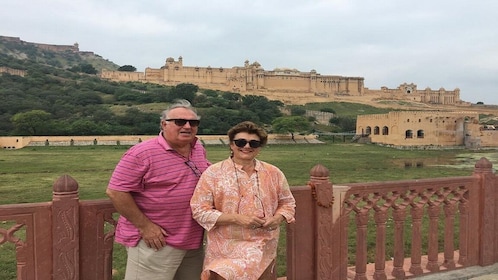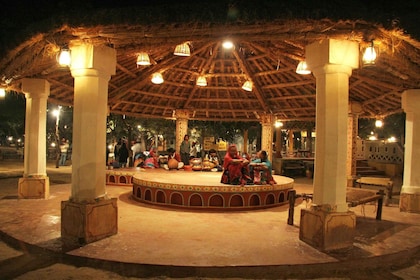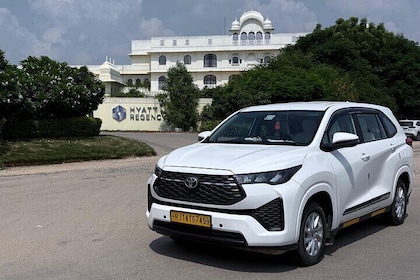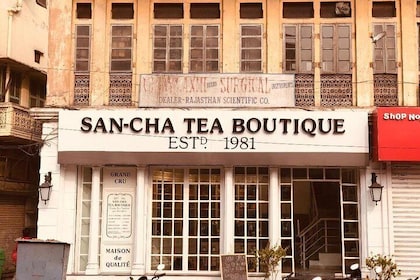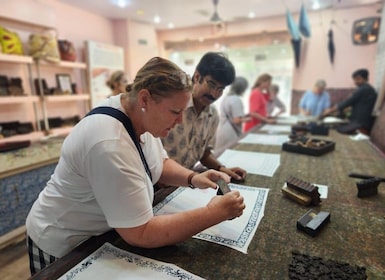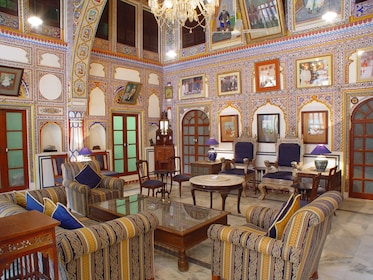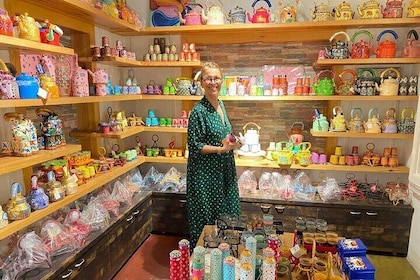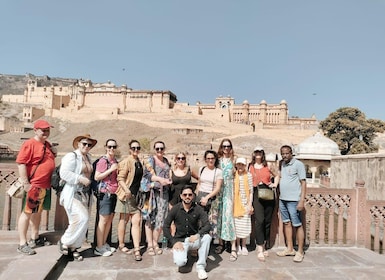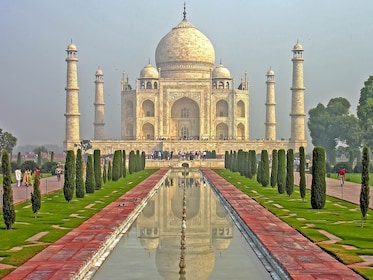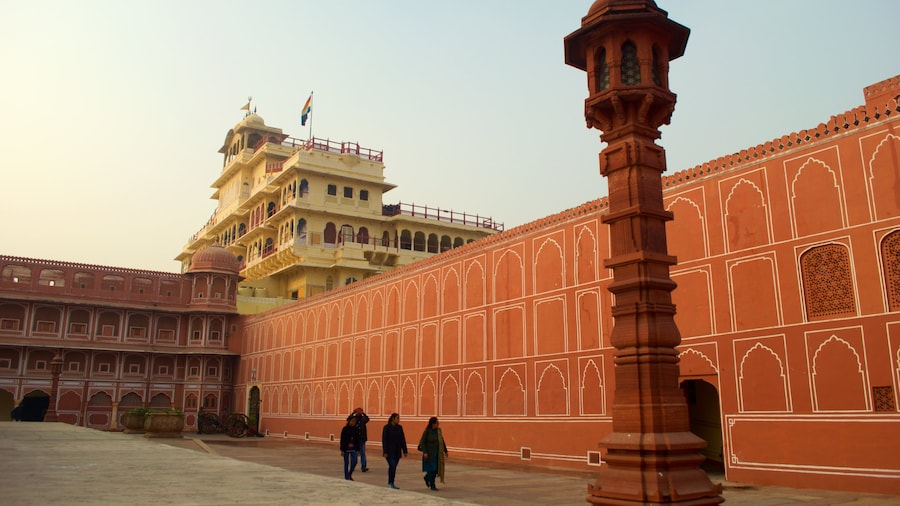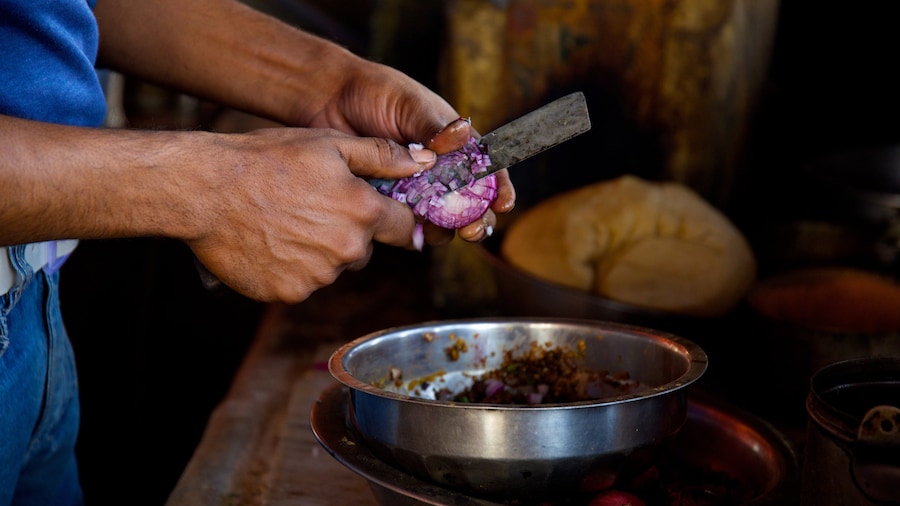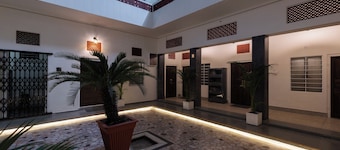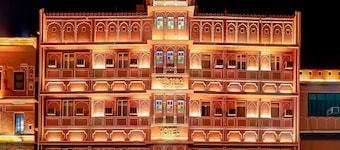A latticed, sandstone jewel in the heart of the Pink City, this exquisite landmark was once used by royal ladies to anonymously survey the views.
Visit Hawa Mahal, one of Jaipur’s iconic buildings, to understand why the city has a reputation for fine architecture. This striking palace, rising five stories in an ordered jumble of windows, columns and pin-hole windows, is one of the city's most revered sights. Learn about its royal inhabitants and explore the colourful rooms within.
The Hawa Mahal was built in 1799 for the ladies of the royal court, so that they could view the activities on the city streets without being viewed themselves. It has 953 jhakoras (tiny windows) that are decorated with intricate latticework.
The best view of the façade is from Badi Chaupad, a wide intersection in front of the palace. The layout of the stacked windows, built with pink-and-red sandstone, create what looks like a giant honeycomb. Note the presence of floral Hindu Rajput patterns alongside the arches of Muslim Mughal design. These colliding architectural styles make it one of the city's most intriguing structures.
This Hawa Mahal actually makes up just one part of a larger palace structure. Enter around the back of the complex through the Imperial Door to find yourself in a courtyard enclosed by three two-story edifices. Climb a series of ramps to the inner chambers of the Hawa Mahal.
Admire the colourful columns of the spacious lower rooms before climbing to the upper levels, which are just one room wide. Look through the latticed windows as royal Rajasthani women once did. The dual function of these windows is airflow, which keeps the interior rooms cool, even in muggy Jaipur summers. Appropriately, the palace is sometimes referred to as "The Palace of the Winds.”
The Hawa Mahal is located south of Jaipur's downtown, near the Johri Bazar or Govind Devij Temple. Get there by taxi or tuk-tuk, which is a three-wheeled rickshaw. Hawa Mahal is open every day from early morning until afternoon. The best visiting times are at sunset or sunrise when golden sunlight complements the palace's warm hues.



